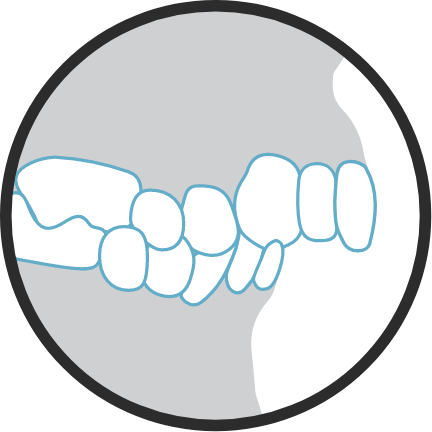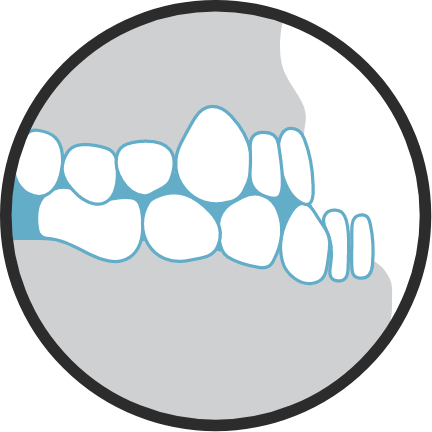
Overjet
Overjet is when the upper front teeth or jaw is excessively ahead of the lower teeth. This condition may be the result of poorly aligned teeth or poor jaw alignment. This can lead to inadequate ability to chew foods and lead to excessive tooth wear on the back teeth.

Underbite
Underbite can occur when the lower teeth protrude past the upper front teeth. This can prevent the normal function of the front teeth and cause excessive wear on the remaining teeth. It can also cause painful jaws and joint problems.



